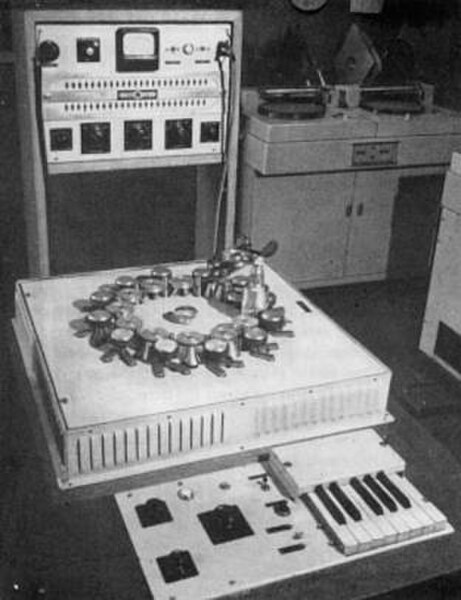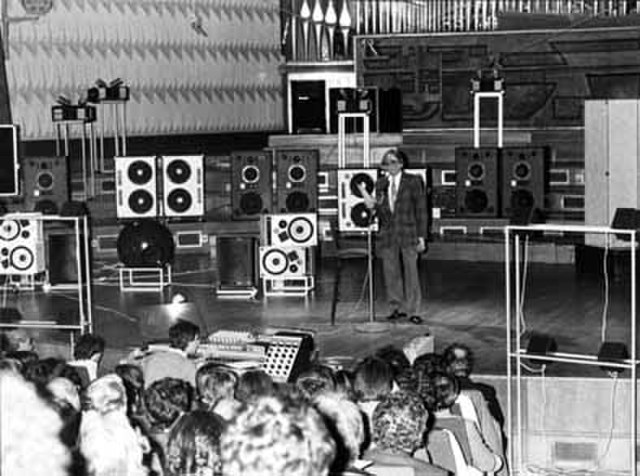Gesang der Jünglinge is an electronic music work by Karlheinz Stockhausen. It was realized in 1955–56 at the Westdeutscher Rundfunk studio in Cologne and is Work Number 8 in the composer's catalog. The vocal parts were supplied by 12-year-old Josef Protschka. It is exactly 13 minutes, 14 seconds long.
Gesang der Jünglinge
Shadrach, Meshach, and Abednego shielded by the angel (Aosta, cloister of the Collegiate church of Saint Ursus, 12th century)
Electronic music broadly is a group of music genres that employ electronic musical instruments, circuitry-based music technology and software, or general-purpose electronics in its creation. It includes both music made using electronic and electromechanical means. Pure electronic instruments depended entirely on circuitry-based sound generation, for instance using devices such as an electronic oscillator, theremin, or synthesizer. Electromechanical instruments can have mechanical parts such as strings, hammers, and electric elements including magnetic pickups, power amplifiers and loudspeakers. Such electromechanical devices include the telharmonium, Hammond organ, electric piano and electric guitar.
Front page of Scientific American in 1907, demonstrating the size, operation, and popularity of the Telharmonium
Leon Theremin demonstrating the theremin in 1927
Phonogene (1953), a tape machine for modifying the sound structure, developed by Pierre Schaeffer et al. at GRMC
Pierre Schaeffer presenting the Acousmonium (1974) that consisted of 80 loudspeakers for tape playback, at GRM






